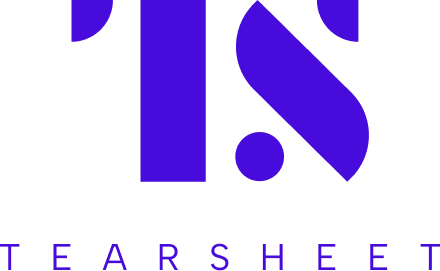Innovating for the Silver Economy: Insights from Charlie’s approach to senior-focused financial services
- America's aging population provides a challenge and an opportunity for financial services providers to service customers and protect them from bad actors.
- From AI-driven fraud protection to innovative wealth decumulation strategies, Charlie's CEO Kevin Nazemi offers insights into the future of personalized banking for seniors and the broader implications for the financial services industry.

The financial services industry is at a pivotal juncture, facing challenges that demand innovative solutions. With an aging global population, institutions are rethinking how to serve older adults who often face unique financial vulnerabilities. The rise of sophisticated fraud schemes, particularly targeting seniors, has become a pressing concern, necessitating advanced protective measures. Simultaneously, the industry is grappling with how to ethically integrate AI and machine learning to enhance services while safeguarding consumer interests. These technologies offer significant opportunities for personalization and efficiency, but also raise questions about data privacy and algorithmic fairness.
To gain deeper insights into these trends and their implications for the financial services sector, we turn to Kevin Nazemi, co-founder and CEO of Charlie, a fintech company focused on serving Americans aged 62 and above. In this interview, Nazemi shares his perspectives on the evolving role of financial services in addressing societal challenges, the ethical considerations surrounding AI implementation in finance, and the future of personalized banking. His observations offer a window into how these industry-wide trends are shaping product development, customer experience, and the broader conversation around financial literacy and consumer protection.
How do you see the role of financial services evolving in addressing societal challenges beyond traditional banking or payments?
At Charlie, we are laser-focused on the unique financial needs of the 62+ community. Since our launch in 2023, we’ve been building and iterating on our core banking product which includes things like faster access to their Social Security check, unparalleled fraud protection, competitive earnings on deposits, no monthly fees or minimums, and intuitive, age-optimized product design.
But there’s much we are working on beyond core banking. For example, a majority of retirees are living Social Security check to Social Security check yet a vast majority own their primary residence. So they are house-rich and cash-poor. We are exploring ways to unlock this home equity in a consumer-friendly way that doesn’t come with the many negatives of reverse mortgages. That’s just one example. We are exploring several simple, customer-friendly products to help people decumulate the assets they have in a tax-optimized and risk-optimized way.
Given the rapid advancement of AI, what do you believe are the key ethical considerations for financial institutions when developing protective technologies?
At Charlie, it’s imperative we not lose sight of our core responsibilities, like enabling customers to access their money quickly, in the quest to address the tsunami of fraud that rapid AI advancement can bring. Whenever possible, solutions should be elegant and practical. An example of this is our most recent product launch, SpeedBump. The 6-hour pause that is implemented doesn’t change the user experience when an authorized transfer is taking place but dramatically changes the consumer experience when a transaction is unauthorized, and thus, more likely to be fraud. Just as we wouldn’t accept stop signs every 3 feet, we shouldn’t accept limitations every time we interact with a financial services company.
Apart from ethical considerations, there are practical ones as well. We have to build an experience that works for older Americans, so they come back to us and in turn, benefit from today’s technology. That may sound like a platitude but a good example is implementing something like two-factor text authentication. When building that functionality, we had to recognize that the end-user may not be as reflexively comfortable with that technology and may be using a less expensive and less capable device to access the platform. Respecting that means that when you implement two-factor authentication, you don’t put the text code in the middle of a text paragraph; it means you consider making it four digits instead of eight to increase the chance that the number can be remembered when toggling; it means never using a 7 or 10 digit code because the phone might recognize that as a phone number and initiate a call when the customer is trying to copy the code.
These are all minor things but together, they represent a fully functional and enjoyable experience for an older American. And with everything we implement, every product we build, and every feature we add, we ensure we are considering their unique behaviors, patterns, and realities.
How might innovations like SpeedBump impact the broader conversation around financial literacy and consumer protection across all age groups?
The segment we serve faces the greatest number of financial frauds and scams but no one is immune to them. We hope that our leadership in creating new features and products drives others to consider similar ones and, hopefully, create ones we haven’t thought of that we can learn from. But Charlie is a little more than a year in operation. We have major, innovative work in the pipeline around education that will help all sorts of people broach tricky financial situations in their lives.
We are also building products that help families have these important conversations. An example is Co-Pilot, which allows customers to add a trusted family member as a second set of eyes to receive important alerts, like a change of address, or a payee being added to bill pay. Co-Pilots do not have access to account information or transaction details and are not able to spend funds, but this additional layer of protection can help prevent various problems, including fraud.
In your view, what are the most significant challenges facing the financial industry in the next decade, and how can companies like Charlie contribute to solving them?
With two-thirds of Social Security recipients living paycheck to paycheck and over 17 million American adults over 65 being economically insecure, fraud has become an emergency in this country. A major fraud can wipe them out entirely, but smaller-scale fraud has negative impacts as well, making it hard for victims to pay their bills on time, afford everyday things like groceries or gas, and cause major inconveniences like replacing their cards, their phone and updating all of their billing information across various accounts. And fraud victims are often sad and ashamed after and can experience intense anxiety and depression.
Billions are being stolen each year and the scariest part is that fraudsters are becoming highly sophisticated. At Charlie, we believe it’s our responsibility to build products and services to protect older Americans from this growing crisis. With the launch of FraudShield, our personalized suite of fraud protection tools built exclusively for the unique needs of 62+ Americans, and now SpeedBump, we are taking important steps in protecting our customers and setting a new standard in the banking industry.
How do you envision the future of personalized banking services, and what role might AI and machine learning play in shaping this future?
There is a tremendous amount of value that can be added to the service experience. For instance, AI can enable our US-based customer service call center to be far better informed about each customer that calls and resourced to more quickly answer any question they may have or resolve any issue. And we are not too far from being able to use AI to develop custom tutorials that mimic having someone by your side helping you navigate your financial reality every step of the way. For example, a customer might say, “Show me how to send a peer-to-peer payment” and our website can shift to support mode and have a pointer highlight where the customer should click along with annotations, click by click, regardless of where on our site or in-app the customer starts. Every single thing we do at Charlie, from product design to customer experience to AI and machine learning will be in service of helping older Americans to get the most out of their money and keep it safe.



